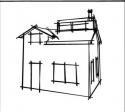
Research shows that doing nothing is practiced by some, but it is hardly the best way. While cleanliness of the the drops, including taps and tees are very important, the lateral much less so and the mains have almost no bearing.
I attended Dr Tim Perkins' seminar yesterday on tubing sanitation. I will not even try to state all of the research findings but cleaning the drops is very important. It did not show that cleaning a drop brought it back to year 1 results however. A new tap/drop and tee did bring it back. Then the next best was a new CV/on a used drop. With that production falls in yr 2 and 3 but that was shown to be the most profitable. Then in year 4, a new drop/tap and tee. In their testing, the year they use a new drop and tee they do not use CV, just a new plain tap. The CV''s were used in yrs 2 & 3.
Soon his test results may be up on the UVM website. There is a lot more info when that goes up.
His presentation in regards to sanitation focused on profits (the added sap vs the cost to do it.)
The cleaning that Art Kreuger does in his video did not say it will bring the drop back to new, he is testing to see how well it does. He has not yet gone thru a season using that method.
Art, however is one of the early ones who has used the 3/16 method, he may have more years experience using it than anyone else except maybe Tim Wilmot, who pioneered the idea.
In 3/16 even more than with 5/16 sanitation has proven to be critical. Year 1 is real good, 2 loses production and 3 even more. A 3 yr rotation for taps, drops and tees is indicated. Years 2 and 3 need to be sanitized to get good results.
Dave Klish, I recently ordered a 2x6 wood fired evaporator from A&A Sheet Metal which I will be converting to oil fired
Now have solar, 2x6 finish pan, 5 bank 7x7 filter press, large water jacketed bottler, and tankless water heater.
Recently bought another Gingerich RO, this one was a 125, but a second membrane was added thus is a 250, like I had.
After running a 2x3, a 2x6, 3x8 tapping from 79 taps up to 1320 all woodfired, now I'm going to a 2x6 oil fired and a 200-425 taps.













 Reply With Quote
Reply With Quote







